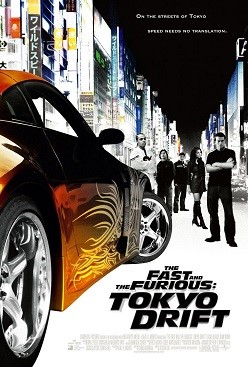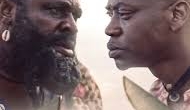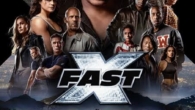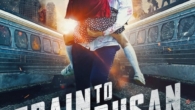
Fast and Furious 3: Tokyo Drift (2006)
Fast & Furious: Tokyo Drift, released in 2006, takes the franchise in a unique direction. Directed by Justin Lin, this installment departs from the street-racing scene of Los Angeles and dives into the world of drift racing in Tokyo, Japan. While lacking the original cast, Tokyo Drift introduces a new generation of characters and a distinct visual style that would influence future films.
Synopsis:
Sean Boswell (Lucas Black) is a troubled teenager in California with a passion for illegal street racing. After a reckless stunt lands him in legal trouble, he’s forced to move in with his estranged military father stationed in Tokyo.
Feeling like an outsider in a new country, Sean soon finds solace in the underground world of drift racing. He befriends Han Lue (Sung Kang), a skilled drifter who takes him under his wing. Sean falls for a local girl, Nela (Nathalie Kelley), and becomes entangled in a dangerous rivalry with D.K. (Drift King), the ruthless leader of the Tokyo drift scene.
As Sean hones his drifting skills, he uncovers a hidden truth about Han’s past and a connection to the events of the previous films. He must face off against D.K. in a climactic drift race to protect his newfound friends and prove his worth.
A Standalone Story (but not really):
Tokyo Drift serves as a semi-standalone story within the Fast & Furious franchise. While it features references to the previous films and introduces characters who would become important later on, it doesn’t directly follow the narrative of Dom Toretto and Brian O’Conner.
Focus on Drift Racing:
This installment departs from the emphasis on straight-line drag racing seen in the earlier films. Instead, Tokyo Drift puts the spotlight on the technical and artistic aspects of drifting, showcasing elaborate car maneuvers and high-speed chases through the neon-lit streets of Tokyo.
New Cast, New Look:
Tokyo Drift features a new cast of characters, with Lucas Black as the lead protagonist. The film also has a distinct visual style, incorporating anime influences and a more youthful vibe compared to its predecessors.
Surprise Cameos:
While the film primarily focuses on its new characters, there are surprise cameo appearances by Vin Diesel at the beginning and the end, teasing his potential return in future installments and subtly connecting Tokyo Drift to the larger Fast & Furious universe.
Movie Details:
Genre: Action/Crime
IMDB Rating: 6.0
Director: Justin Lin
Release Name: Fast & Furious: Tokyo Drift (also known as The Fast and the Furious: Tokyo Drift)
Tagline: “There are no rules. No limits. No fear.”
Audio Language(s): English
Runtime: 1 hour and 44 minutes
Filming Locations: Tokyo (Japan), Los Angeles (USA)
Release Date: June 16, 2006 (USA)
Starring: Lucas Black (Sean Boswell), Sung Kang (Han Lue), Nathalie Kelley (Nela), Brian Tee (D.K.), Zachari Abel (Twinkie), Nikki Griffin (Cindy), Lil’ Bow Wow (Jimmy – cameo), Vin Diesel (Dominic Toretto – cameo)
Box Office: $158.6 million (worldwide)
Production Company: Universal Pictures
Trailer:
You can find the official trailer for Fast & Furious: Tokyo Drift on Youtube
Other Interesting Facts:
Despite mixed critical reception, Tokyo Drift gained a cult following over time, particularly among fans who appreciate the import car scene and drift racing culture.
The film introduced Han Lue, a character who would become a fan favorite and play a more significant role in later installments.
Tokyo Drift paved the way for the franchise’s shift towards a more globalized setting and elaborate action sequences seen in future films.
Tokyo Drift Cast: A New Generation of Gearheads
Lucas Black takes the center stage as Sean Boswell, a troubled teenager seeking redemption through the world of drift racing. Nathalie Kelley portrays Neela, a beautiful and independent young woman who becomes Sean’s love interest. Sung Kang introduces the character of Takashi, the arrogant and ruthless Drift King who becomes Sean’s rival. The film also features Bow Wow as Twinkie, Sean’s streetwise American friend, and Brian Tee as D.K., the mysterious owner of a local garage who takes Sean under his wing. While familiar faces from the previous films are absent, Tokyo Drift paves the way for the introduction of characters who would become integral to the franchise in later installments.
Tokyo Drift Crew: Navigating the Drifting Culture
Justin Lin steps behind the director’s chair for the first time in the Fast & Furious franchise, bringing a fresh perspective and a focus on the import car scene and drifting culture. Lin, himself a car enthusiast, injects his passion for Japanese street racing into the film, creating a visually stunning and culturally immersive experience. Chris Morgan returns as the screenwriter, crafting a story that explores themes of self-discovery, cultural adaptation, and finding a sense of belonging. The film boasts impressive stunt work coordinated by Philip Rhee, showcasing a unique blend of drifting techniques and high-speed chases through the neon-lit streets of Tokyo. The musical score by Brian Tyler complements the film’s energy with a mix of electronic music and Japanese influences.
Tokyo Drift: Filming Locations – A World Away from Los Angeles
The Fast and the Furious: Tokyo Drift takes viewers on a vibrant journey through the bustling streets of Tokyo, Japan:
- Tokyo, Japan: The film primarily takes place in Tokyo, showcasing iconic landmarks like Shibuya Crossing, the Tokyo Tower, and the Roppongi district. These locations become backdrops for drift races, street scenes, and glimpses into Japanese nightlife.
- Los Angeles, California: The film opens with a brief scene in Los Angeles, establishing Sean’s troubled past and reckless driving habits that lead him to Tokyo.
This shift in location from the familiar Los Angeles setting of the previous films emphasizes the cultural differences Sean encounters and the challenges he faces adapting to life in Japan.
The Soundtrack of Tokyo Drift: Revving Up the JDM Vibe
The soundtrack of The Fast and the Furious: Tokyo Drift is a high-energy mix of hip-hop, electronic music, and Japanese artists, perfectly capturing the film’s youthful energy and the JDM (Japanese Domestic Market) car culture:
- Tokyo Drift (Fast & Furious) by Teriyaki Boyz ft. Lil Wayne, Pharrell & Cliff
- Cho Lismo by The Pharcyde
- Breathe by Killing Joke
- Ne Kan Don (Remix) by Dohalic Crew
- Gladiator by Nelly
These tracks, along with others, create a unique soundscape that complements the film’s high-octane action sequences and the vibrant Tokyo setting. The soundtrack became a commercial success, introducing Western audiences to Japanese hip-hop and electronic music.
The Real Story Behind Tokyo Drift (Fact vs. Fiction)
The Fast and the Furious: Tokyo Drift, like its predecessors, is a fictional story, but it draws inspiration from real-world elements:
- Fact: Drifting is a real motorsport that originated in Japan. It emphasizes controlled slides and maintaining a precise angle through corners. The film accurately portrays the basic techniques and terminology of drifting.
- Fact: The import car scene, particularly a focus on Japanese cars, is a real phenomenon in North America and other parts of the world. The film showcases various popular JDM models and modifications.
- Fact: Tokyo is a major metropolis with a vibrant nightlife scene, including areas known for street racing and car customization. The film captures the essence of this culture, albeit in a more stylized and action-oriented way.
- Fiction: The elaborate underground racing circuits, high-stakes competitions, and the extreme consequences depicted in the film are Hollywood inventions. Real-life drifting tends to be a more controlled and regulated motorsport.
Tokyo Drift Box Office Performance
The Fast and the Furious: Tokyo Drift received mixed reviews from critics but performed decently at the box office. The film grossed over $163 million worldwide on a budget of $62 million. While not achieving the blockbuster status of later installments, Tokyo Drift helped expand the Fast & Furious fanbase and introduced a new generation of viewers to the franchise.
Here are some possible explanations for the film’s box office performance:
- Shift in focus: The move away from the original cast and the established Los Angeles setting may have alienated some fans of the previous films.
- Focus on a younger audience: The film’s emphasis on import car culture, drifting, and a coming-of-age story might have resonated more with a younger demographic.
- Franchise potential: Despite mixed reviews, Tokyo Drift’s box office success demonstrated the franchise’s potential for growth on a global scale.
Tokyo Drift Review: Is It Worth Watching?
The Fast and the Furious: Tokyo Drift has its share of critics and fans. Here’s a breakdown of some reviews to help you decide if it’s worth watching:
Positive Reviews:
- “A visually stunning and energetic film that captures the essence of Japanese car culture.” –
- “A fun and exciting ride that introduces a new generation of characters and a fresh perspective to the franchise.” –
- “Tokyo Drift is a worthy addition to the Fast & Furious universe, offering a unique blend of action, coming-of-age themes, and stunning visuals.” –
Negative Reviews:
- “The story is predictable and relies on cheesy dialogue.” –
- “The acting is subpar, and the characters are not as well-developed as those in the previous films.” –
- “Fans of the original Fast & Furious films might be disappointed by the shift in focus and the lack of familiar faces.” –
Ultimately, whether you enjoy Tokyo Drift depends on your expectations and what you’re looking for in a movie. If you’re a fan of car chases, import cars, drifting, and a coming-of-age story set in a vibrant location like Tokyo, then you might find it entertaining. However, if you prefer the focus on established characters, a more grounded storyline, and the high-stakes heist elements of the previous films, you might be better off revisiting the first two installments.
Tokyo Drift vs. Similar Movies: A Gearhead Showdown
The Fast and the Furious: Tokyo Drift isn’t the only film that throws car enthusiasts, high-octane action, and exotic locations into the mix. Here’s how it stacks up against five other movies that will get your adrenaline pumping:
Tokyo Drift vs. The Fast and the Furious (2001):
- Plot: Both are part of the Fast & Furious franchise, but with separate storylines and protagonists. Tokyo Drift follows Sean Boswell’s journey in the Tokyo drift scene. The Fast and the Furious features Dominic Toretto (Vin Diesel) and Brian O’Conner (Paul Walker) working undercover to infiltrate a street racing ring.
- Action: Both showcase impressive car stunts and action sequences. Tokyo Drift emphasizes drifting techniques and high-speed chases through Tokyo’s streets. The Fast and the Furious features street races, drag racing, and elaborate heists.
- Characters: Tokyo Drift introduces a new cast of characters with a focus on Sean’s coming-of-age story. The Fast and the Furious features the now-iconic pairing of Dom and Brian, establishing their bond and the core group of characters.
- Tone: Tokyo Drift has a youthful and energetic tone, highlighting the underground racing scene and car customization culture. The Fast and the Furious has a more serious tone with elements of crime and undercover operations.
- Overall: If you enjoy a coming-of-age story set in the world of drifting, Tokyo Drift is a good choice. If you prefer the original Fast & Furious crew, high-stakes heists, and a more grounded story, The Fast and the Furious is the better option.
Tokyo Drift vs. Initial D (1998):
- Plot: Both center around the world of drift racing and feature young protagonists. Tokyo Drift follows Sean’s struggle to establish himself in Tokyo’s drifting scene. Initial D tells the story of Takumi Fujiwara (Jay Chou), a high school delivery driver who possesses exceptional drifting skills.
- Action: Both showcase impressive drifting sequences, highlighting the technical aspects and challenges of the sport.
- Characters: Tokyo Drift features a smaller cast with a focus on Sean’s personal growth and his rivalry with Takashi. Initial D features a more developed cast, exploring Takumi’s relationships with his father, his love interest, and his fellow racers.
- Tone: Tokyo Drift has a more Hollywood-action feel, with high-stakes races and exaggerated consequences. Initial D has a more grounded and character-driven approach, focusing on the passion for drifting and the challenges faced by young racers.
- Overall: If you enjoy a fast-paced action film with drifting as the centerpiece, Tokyo Drift is watchable. If you prefer a character-driven story with a deeper look into the world of Japanese drifting culture, Initial D is a better choice.
Tokyo Drift vs. Need for Speed (2014):
- Plot: Both feature illegal street racing and high-stakes challenges. Tokyo Drift follows Sean’s journey in the Tokyo drift scene to earn respect and impress Neela. Need for Speed features Tobey Marshall (Aaron Paul) seeking revenge against a former rival by participating in a cross-country race.
- Action: Both showcase impressive car chases and stunts, with a focus on high-performance vehicles. Tokyo Drift emphasizes drifting techniques, while Need for Speed features a wider variety of car chases and race environments.
- Characters: Tokyo Drift introduces a new cast with a focus on Sean’s self-discovery. Need for Speed features a more developed cast with a revenge plot driving the narrative.
- Tone: Tokyo Drift has a youthful and energetic tone, highlighting the import car scene and racing culture. Need for Speed has a more serious tone with elements of revenge and redemption.
- Overall: If you enjoy the Tokyo setting and the focus on drifting, Tokyo Drift is a good choice. If you prefer a high-octane car chase film with a revenge story and a wider variety of racing environments, Need for Speed might be more appealing.
Tokyo Drift vs. Bullitt (1968):
- Plot: Both feature iconic car chases as central set pieces, but within vastly different contexts. Tokyo Drift follows Sean’s involvement in illegal drift races on the neon-lit streets of Tokyo. Bullitt showcases a thrilling chase through the hilly streets of San Francisco as detective Frank Bullitt (Steve McQueen) pursues a hitman.
- Action: Both films feature masterfully crafted car chases that prioritize realism and showcase the skill of the drivers. Tokyo Drift emphasizes drifting techniques and high speeds on winding city streets. Bullitt features a white Ford Mustang chasing a black Dodge Charger through city traffic, showcasing car handling and precision driving.
- Characters: Tokyo Drift focuses on a younger cast and explores themes of cultural adaptation and finding belonging. Bullitt features a more reserved protagonist in Frank Bullitt, highlighting his determination and professionalism.
- Tone: Tokyo Drift has a youthful and energetic tone, highlighting the underground racing scene and car customization culture. Bullitt has a more serious and suspenseful tone, focusing on the stakes of the chase and the pursuit of justice.
- Overall: If you enjoy adrenaline-fueled car chases with a focus on drifting techniques, Tokyo Drift is a good choice. If you prefer a classic car chase film with a focus on realistic driving and a suspenseful atmosphere, Bullitt is the better option.
Tokyo Drift vs. The Transporter (2002):
- Plot: Both feature skilled drivers working in unconventional jobs. Tokyo Drift follows Sean’s journey in the drift scene, while also working for D.K. to earn money. The Transporter features Frank Martin (Jason Statham) as a transporter who adheres to a strict code and avoids personal involvement in his jobs.
- Action: Both showcase impressive driving sequences and action stunts. Tokyo Drift emphasizes drifting techniques and high-speed chases. The Transporter features car chases, hand-to-hand combat, and gunfights, with a focus on Frank Martin’s individual skills.
- Characters: Tokyo Drift introduces a new cast with a focus on Sean’s growth and his rivalry with Takashi. The Transporter features a lone-wolf protagonist in Frank Martin, showcasing his resourcefulness and fighting skills.
- Tone: Tokyo Drift has a youthful and energetic tone, highlighting the import car scene and racing culture. The Transporter has a more serious and gritty tone, with moments of dark humor.
- Overall: If you enjoy drifting sequences and a focus on the Tokyo car scene, Tokyo Drift is a good choice. If you prefer a character-driven story with a lone-wolf protagonist, intense action sequences beyond car chases, and a darker tone, The Transporter might be more appealing.
Where to Watch/Download The Fast and the Furious: Tokyo Drift
The Fast and the Furious: Tokyo Drift is available for digital rental or purchase on various platforms like iTunes, Amazon Prime Video, Google Play, and Microsoft Store. You might also find it on VOD services like Hulu or HBO Max, depending on your subscription plan.
For those who prefer a physical copy, The Fast and the Furious: Tokyo Drift is available on Blu-ray and DVD. These typically include bonus features like behind-the-scenes featurettes, deleted scenes, and commentary tracks, offering an extended look into the filmmaking process.
Availability may vary depending on your region, so it’s recommended to check the specific platform or retailer before making a purchase.
Conclusion: Buckle Up and Drift into a Different Fast & Furious Experience
The Fast and the Furious: Tokyo Drift may not be the strongest entry in the franchise when compared to later installments, but it offers a unique perspective and a change of scenery. It introduced a new generation of characters, expanded the Fast & Furious universe, and brought the world of drifting to a wider audience. So, whether you’re a longtime fan or simply enjoy high-octane action with a touch of coming-of-age drama, Tokyo Drift might be worth a watch.
Ready to experience the neon-lit streets of Tokyo and the world of drift racing? Check out The Fast and the Furious: Tokyo Drift on your preferred streaming platform or purchase a physical copy today!








Leave a Reply